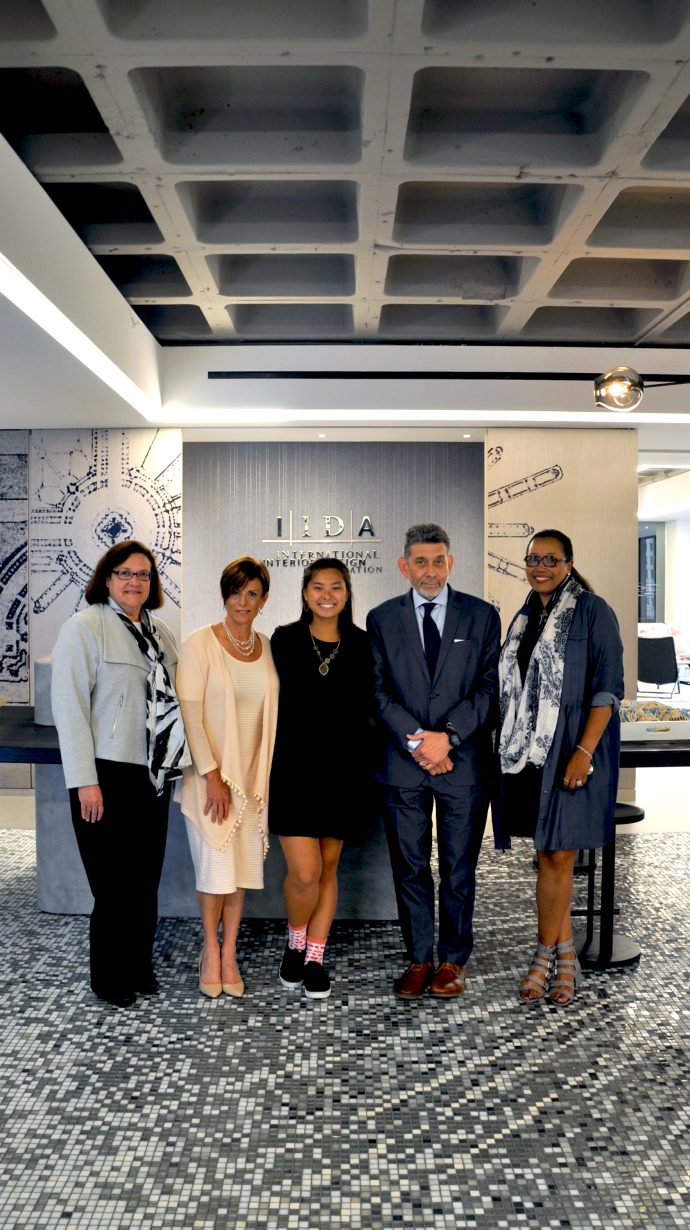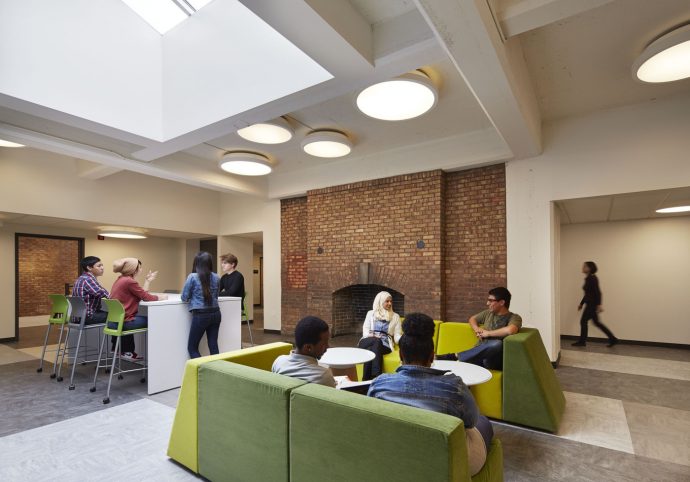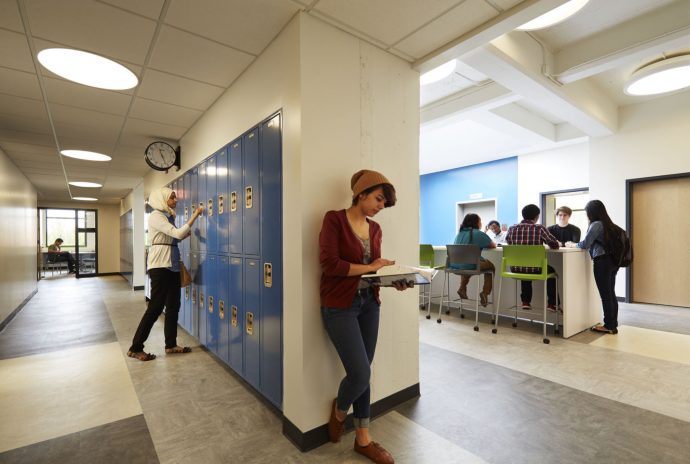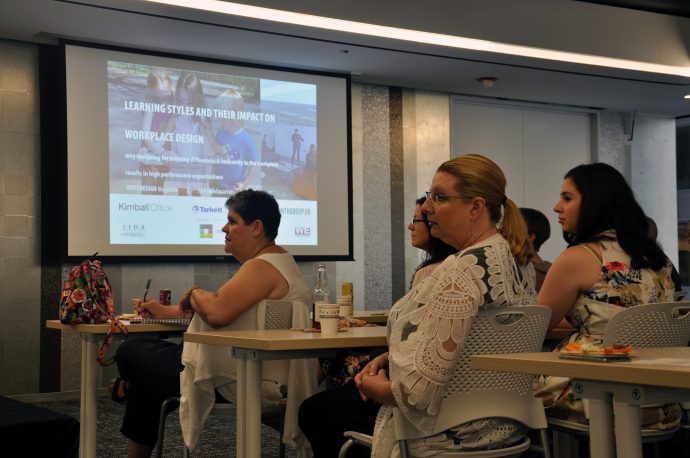On Tuesday, July 25th, we gathered in Chicago for our most recent Work Design TALK on the important topic of: Learning Styles and Their Impact on Workplace Design.
The connection between learning styles and the impact on work design was first brought to light last year at our event in Washington, DC when panelist Arnold Levin touched on the subject at our ABOUT DESIGNING FOR CHOICE IN THE WORKPLACE event. He then followed up with a series of articles that discussed this concept in more detail. That is how interesting the topic is, and why we wanted to continue the discussion. Guest moderator Cheryl Durst, the executive vice president and CEO of IIDA, the International Interior Design Association deftly led the lively and provocative discussion on how work place strategists and designers can learn from the educational community. Meeting in the newly completed IIDA HQ learning center, the conversation got off to a quick start.

While the topic and relevance to work place design are clear, there are very personal reasons our panel has insight and experience to make the conversation dynamic and informative. Our panel participants have firsthand knowledge and experience with these issues; a millennial with LD, an educator working with LD students and who has recently completed the design of her school which faced similar issues as those in the workplace, and consultants who both have children with LD. Their experiences have had an impact on their thinking about workplace strategy and how we can add dimension to our research and design solutions by incorporating the importance of learning styles into our best practices for evaluating and designing work space that can support our broad and diverse workplace populations.
Following Cheryl’s introductory remarks, Panelist Arnold Levin, Principal, Workplace Strategies, SmithGroupJJR, described his “aha” moment(s) as he and daughter Zoe navigated her journey through the educational system meeting the challenges posed by her different learning style and challenges of dyslexia. He made the connection that the range of learning differences and how people process information can and does affect their work style. He pointed out that research has shown that there is a connection between high intelligence and creativity and dyslexia and other learning challenges and that the stigma around learning differences is hopefully disappearing as there is a now better understanding that those differences may be what inspires innovation and creativity.

Pointing out that the boundaries between learning and work should be investigated and considered as designers are constantly being challenged to develop space that supports “new ways of working.” Understanding learning style can perhaps be a tool to translate into better and more supportive workspaces.
Speaking to that point, panelist Miriam Pike, Head of School at Wolcott School agreed that there could be a correlation between how we learn and how that affects how we work. Wolcott has created a learning environment to foster the academic achievement of those with learning differences in a collaborative, supportive space. It is the Chicago area’s first independent high school for college-bound teens with dyslexia and other language based learning differences. In 2013, the school opened in Chicago’s Ukrainian Village neighborhood. Designed by Wheeler Kearns Architects, the school is an example of how designing to different learning needs could scale to work place design to help companies intuitively provide for their employee’s multiple needs and work styles. For example, the spaces shown below could be at any recently designed work place:


An estimated 4-6% of high school students in the US are diagnosed with learning disabilities that can interfere with reading, writing, math or other subjects. * Those 2.4 million people move forward into the workforce, so doesn’t it make sense to think about the issues those people will face as they transition from an educational environment to a working environment? That is the supposition that Arnold made, supported by the experience of his daughter, Zoe, now a college student. Everyone is wired differently, and if we want to design inclusive spaces, we must think of the whole person.
That point was made and supported by panelist Kate North, Managing Director of Workplace Strategy & Innovation at Colliers International. As a workplace strategist, she believes understanding the “learning styles” is equally as important as identifying the individual “work styles” as they two are interconnected. We need to consider the implication of the physical environment, technology tools and behavioral aspects when designing an engaging workplace experience. Our goal is to help people work at their best. The more the individual knows about who they are and what they need, the more informed and empowered they can make good choices about the environments and technologies they use. Moving beyond the traditional modes of evaluating personality types and taking a deeper look at options to identify who and what types of people you are designing space for may be where all the threads come together. We talk about inclusiveness and what behaviors affect others. Having a deeper understanding of how people think and learn may give strategists and designers a way to support the people they design for, on a case by case basis. As we know and are experiencing, the whole notion of work, and how and where we need to do it is in a state of change.

Image courtesy of IIDA.
All panelists agreed that performance and productivity are important and cut across all boundaries. Ensuring students have the best shot possible to learn in an environment that supports their individual needs, or providing current or future worker space and tools they need to think, create, produce, engage, the design community should start looking beyond the measures we currently use to program work space.
Zoe Levin spoke to how having the experience of learning in a supportive environment and understanding what places work best for her – has enabled her to manage her work and studies successfully. She also discussed the importance of finding a comfort zone where one can discuss any challenges they have, speak out and ask for assistance or accommodation as needed.
“I am constantly learning more and more about myself and what I need to work as effectively as possible. From a young age, going to schools designed for Learning Disabled children, teachers started the discussion early about the students knowing for themselves what they need to learn best so that we can advocate for ourselves in the future. Being dyslexic and having such a supportive upbringing has been a blessing because it has made me a more aware person who feels strongly in advocating for one’s self.”
Both Arnold and Miriam also addressed this issue, reminding us that even though there are legal requirements and responsibilities to provide accommodations in the workplace, people are often reluctant to ask for that support. As workspaces move to more non-traditional layouts and experiences, based on new technology, the movement to more agile work, and designing for multiple generations – having additional insight to evaluate better how people work, it makes sense also to understand how they learn.
This notion seems to beg the question of how designers can dig deeper to investigate the concept of how learning style does affect work style and how the two issues entwine. We ended the event with more questions than answers but intrigued enough to want to continue the discussion.
What do you think?
For further information check out the following resources:
https://www.creativelearningcentre.com/
https://www.edutopia.org/multiple-intelligences-assessment
*National Center for Learning Disabilities
A special note of thanks to the following businesses and organizations who helped support our efforts to present this important conversation: IIDA, Tarkett, Kimball Office, SmithgroupJJR, Workplace Evolutionaries (WE)



I love this games website http://theyahtzee.com when you are fell the bored then you are try the none time and you will enjoy the more games are this place.